Duffy’s Hope Youth Garden is Bee Friendly Farming certified!
By Thalia Pappas and Photography by David Clarke
Duffy's Hope, Inc., founded in 1998 by Allen “Duffy” Samuels, is a nonprofit service provider, located in the heart of Wilmington Delaware, for at-risk and hard-to-reach youth ages 12-17. With a documented proof of success, the program is credited with improving the quality of life for over 4,500 youth in Wilmington.
Konrad Kmetz, a board member of Duffy’s Hope has helped create and manage a Youth Garden on Wilmington’s Eastside along with Miss Colean Farmer, and with several other residents of the neighborhood. The garden provides a hands-on experience for at-risk youth and their adult mentors and family members to have access to fresh fruit, vegetables, herbs and cut flowers within the Wilmington Eastside Community. This is an area of the city where residents may oftentimes lack access to healthy, fresh produce. Overall, the project encourages Duffy’s Hope youth and the surrounding Community to live healthier lives through the proactive benefits of gardening.
Konrad Kmetz and Allen "Duffy" Samuels
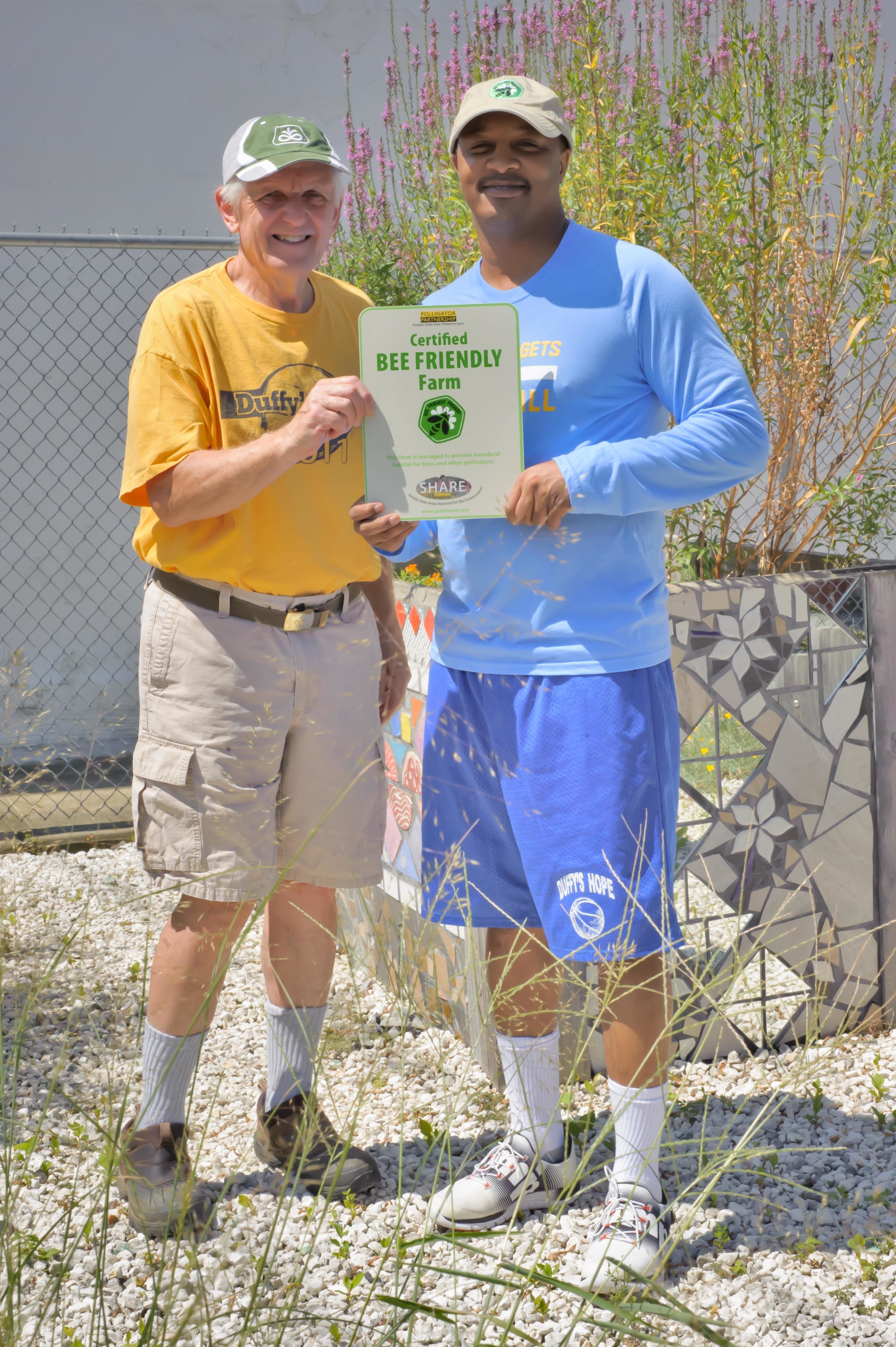
Public Art Space
The garden is also a site of public art with the mosaics on the raised garden beds created by the youth, thanks to the Creative Vision Factory, a drop-in art studio. The beautification of the raised beds in the garden was made possible by This is Our NeighborGood, an initiative to create safe, healthy and vibrant communities, in partnership with Nemours.
mosaic on a raised garden bed, photo by Thalia Pappas
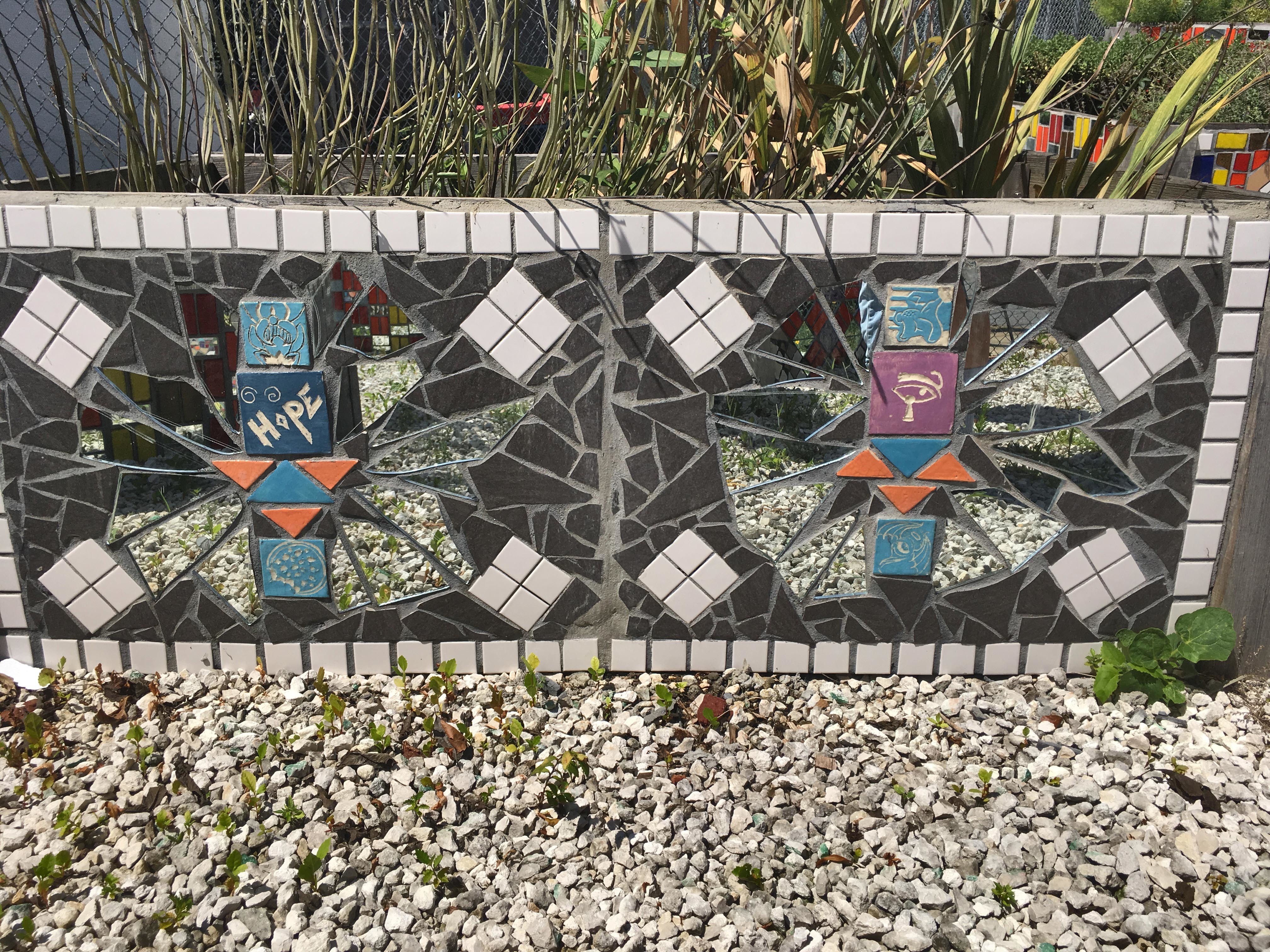
Pollinators in the Bee Friendly Farming Certified Urban Garden
As part of the Delaware Pollinator Protection Plan grant, Thalia Pappas and David Clarke visited the Duffy’s Hope Youth Garden to document what pollinators were attracted to the numerous species of flowers and vegetables grown in this urban garden using David’s photography skills.
The Mid-Atlantic has nearly 500 different species of native and introduced bees and a majority of them are ground nesters. Most require or have strong preference for pollen from native versus exotic non-native plants to raise their young.
Only the six or so regional bumblebee species defend their nests with stings, while the remaining bees are solitary nesters and either cannot sting or don't defend their nest sites. You have most likely stood upon and passed many thousands of their nests in your life time without consequence.
From a few visits, David was able to photograph and identify several species of native bees and butterflies present in the flowers during a visit to this urban garden in June and July 2019.
*All bee identification and biology below by David Clarke*
wool carder bee, photo by David Clarke
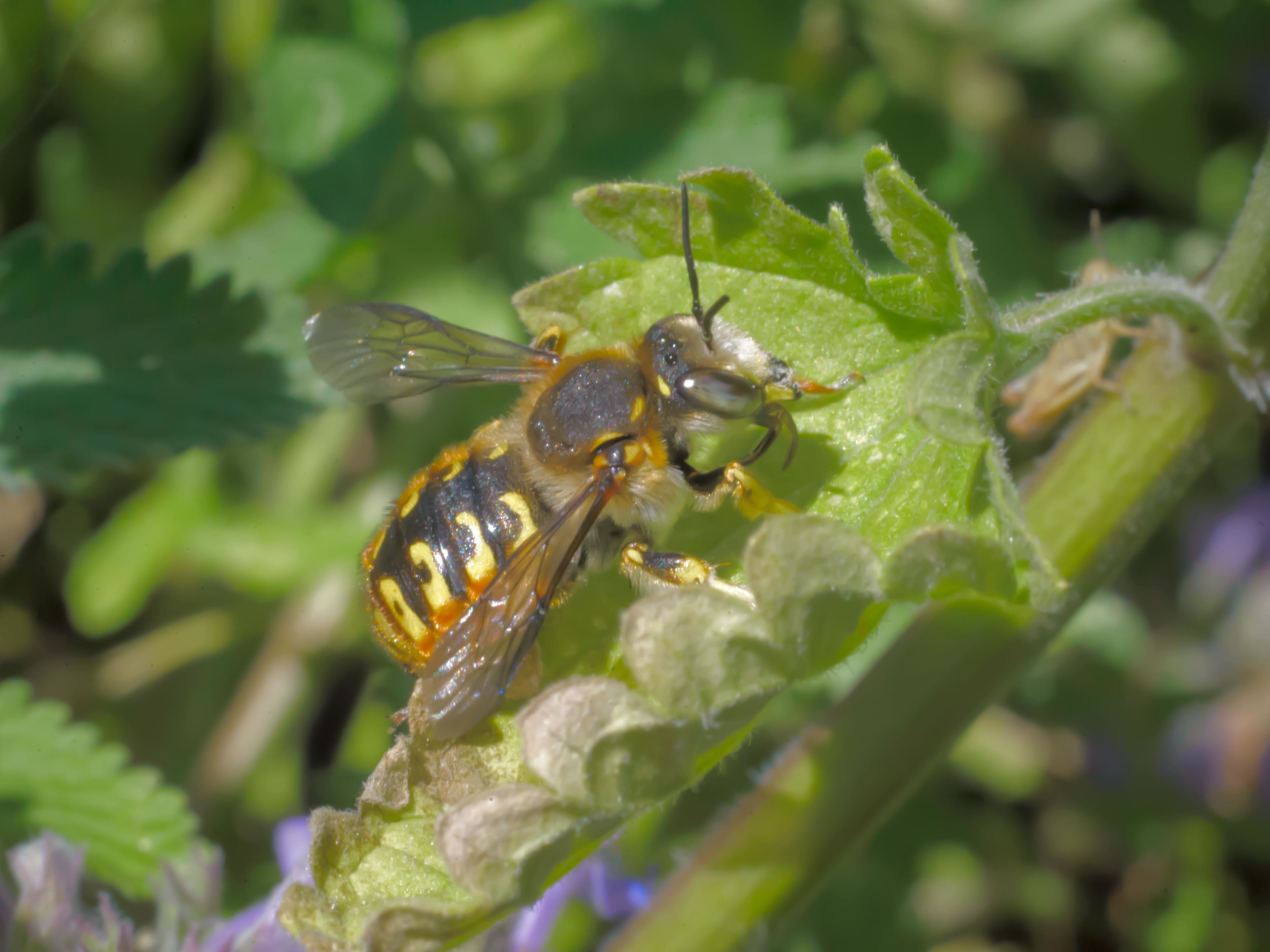
European woolcarder bee is an introduced species of the Anthidium genus that has spread across the North American continent since it introduction in the 1960’s. The name woolcarder refers to its ability to use the combs on its legs to snare linty plant material it uses to line its nest.
long-horned bee, photo by David Clarke
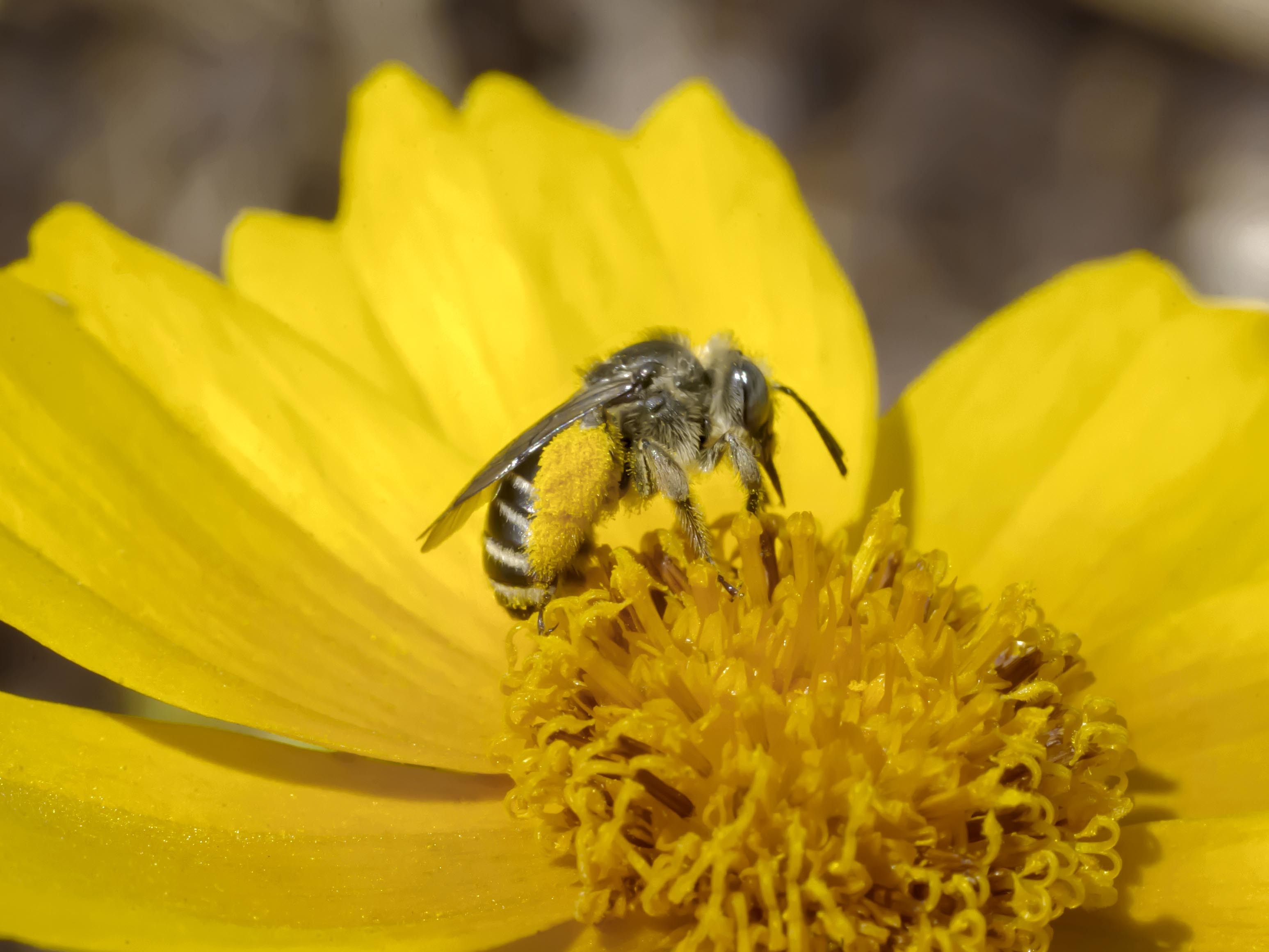
This bee is either the Melissodes or Eucera genus (family Apidae) or long horned bee, which is a solitary ground nester. David rarely sees either, so it is an exciting sighting, especially in this urban environment.
metallic sweat bee, photo by David Clarke
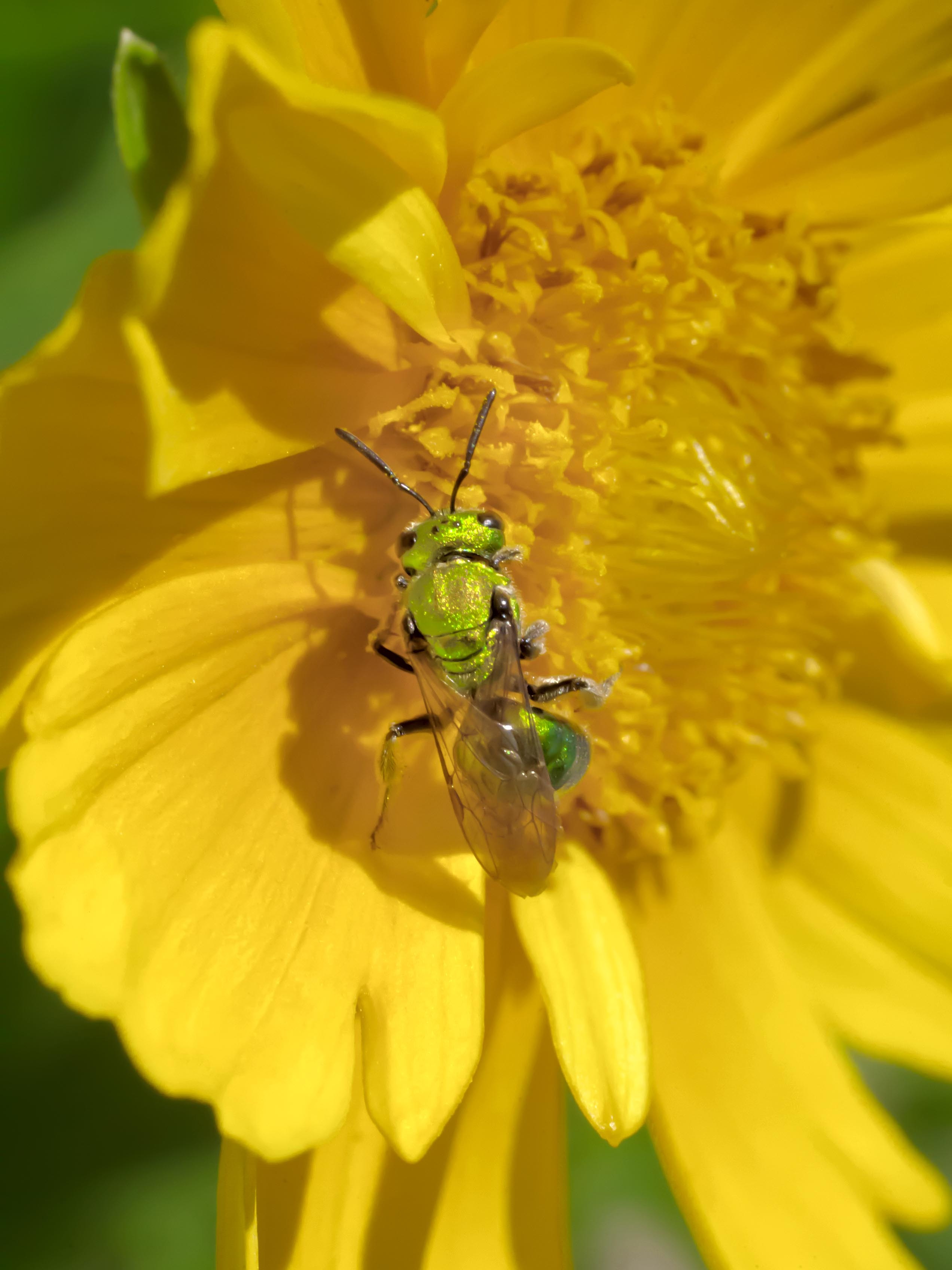
The emerald or metallic sweat bee (Augochlora genus, family Halictidae) on Coreopsis.
sweat bee, photo by David Clarke
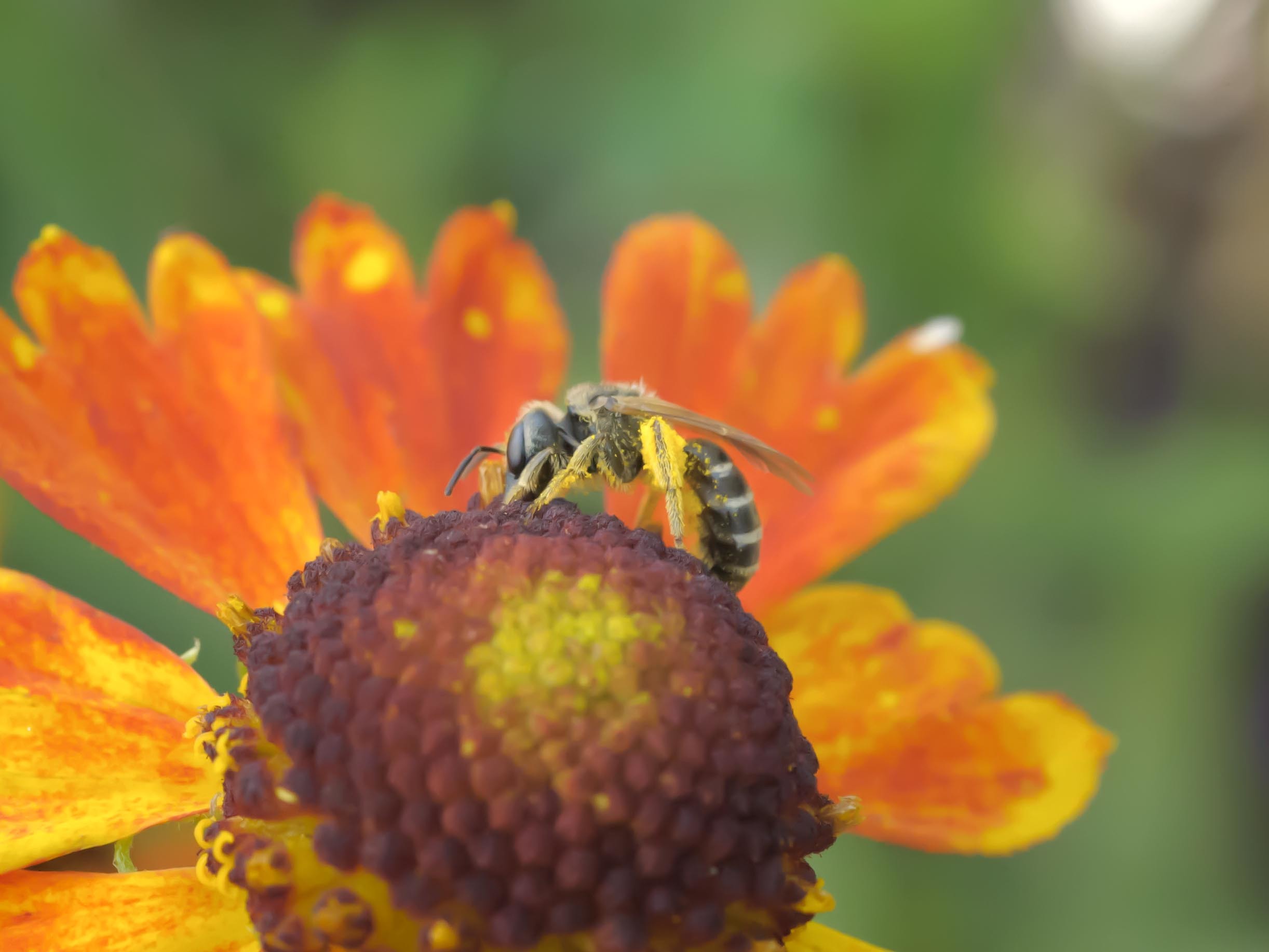
Halicus genus commonly known as sweat bees. Most are eusocial and colony size can vary from 3 or 4 to several hundred.
sweat bee, photo by David Clarke
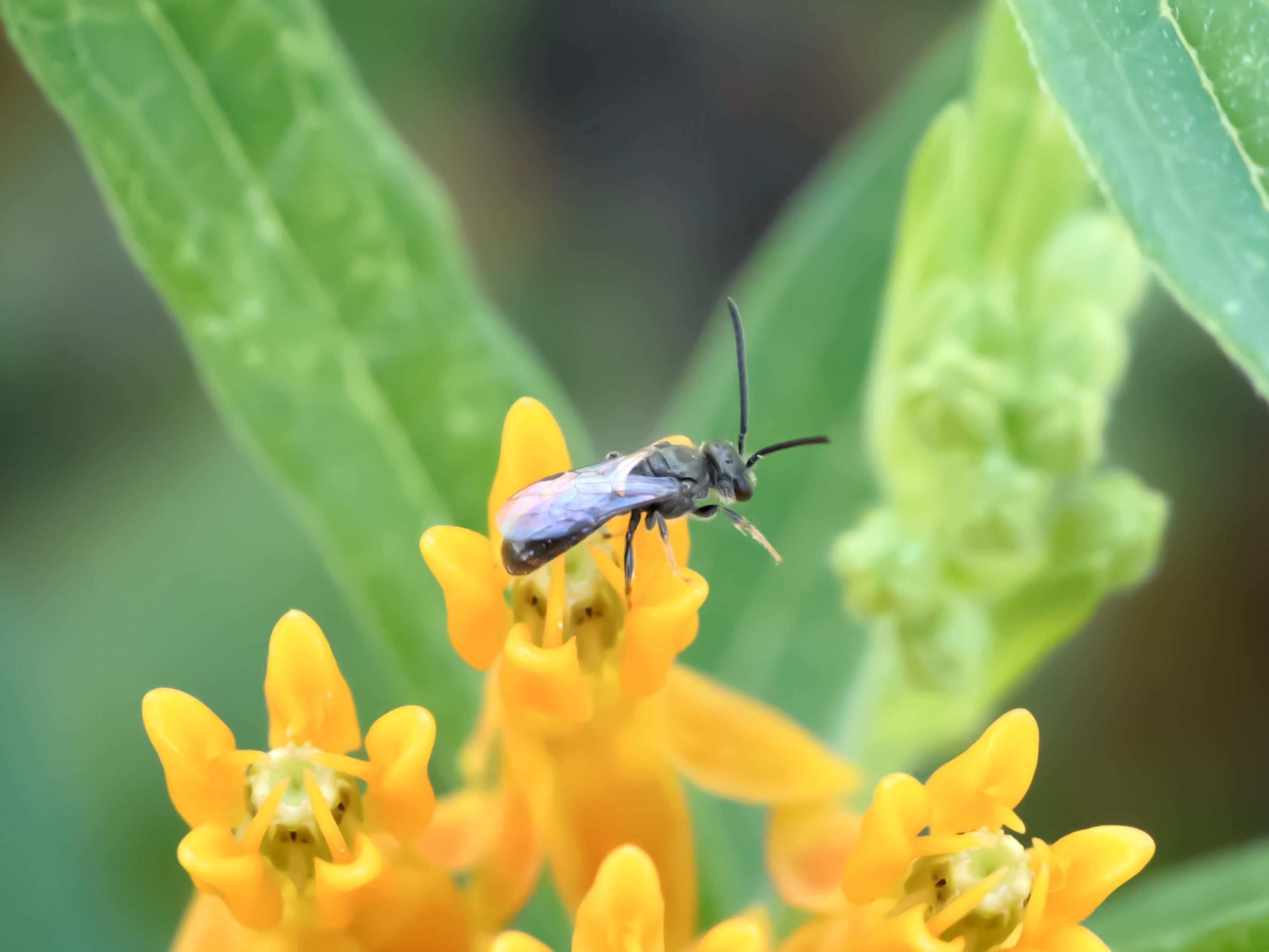
This bee, seen on butterfly milkweed, is either of the Lasioglossum or Halictus genus (family Halictidae). Bees in this family are commonly called sweat bees, because they will often alight on your arm or leg to lick your sweat.
American painted lady butterfly, photo by David Clarke
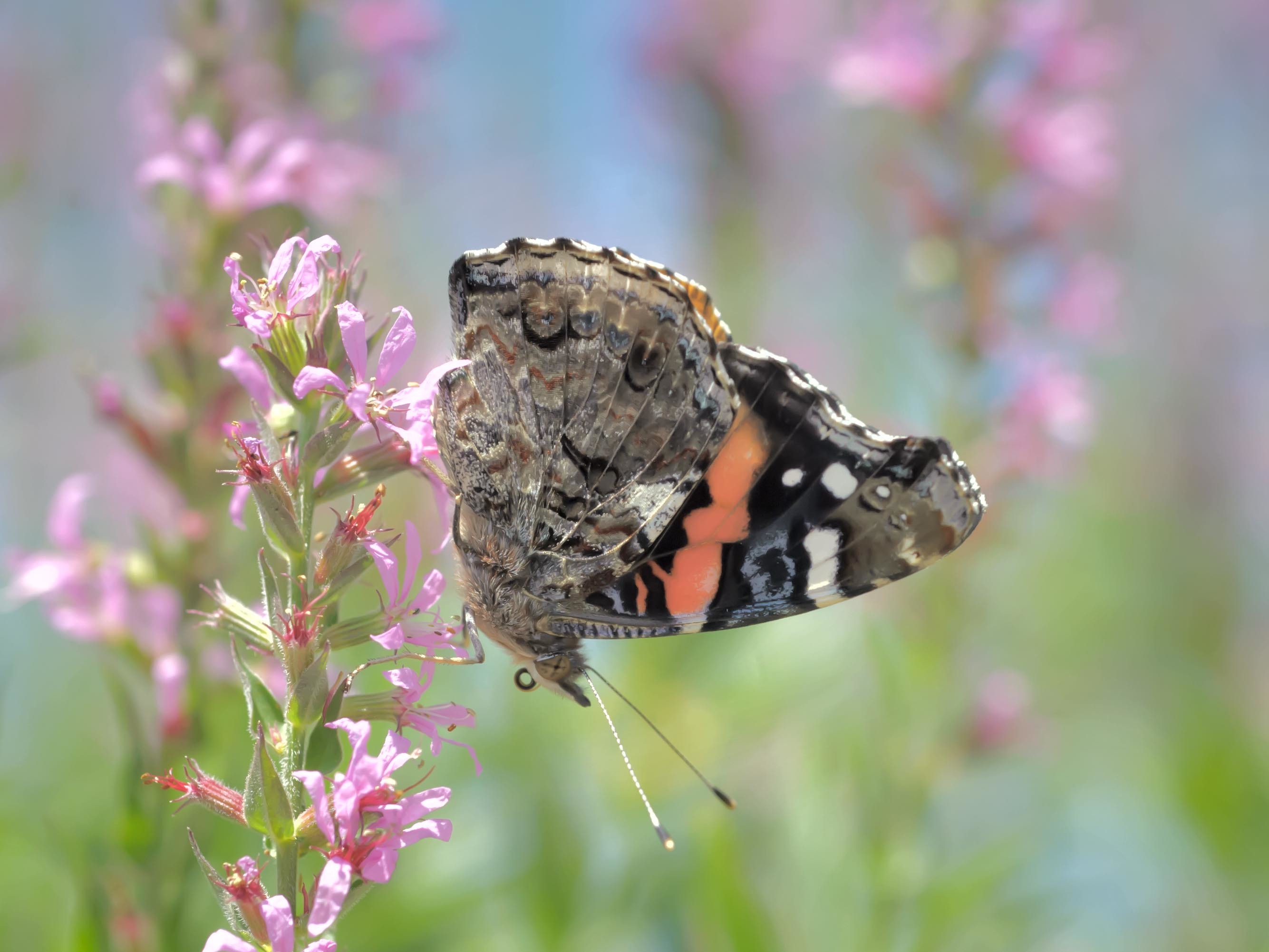
American painted lady (Vanessa virginiensis). Very common, and a very able migrator, it is found throughout the US, Southern Canada, and Central America. Its larvae feed on various plants in the Asteraceae family.
leafcutter bee, photo by David Clarke
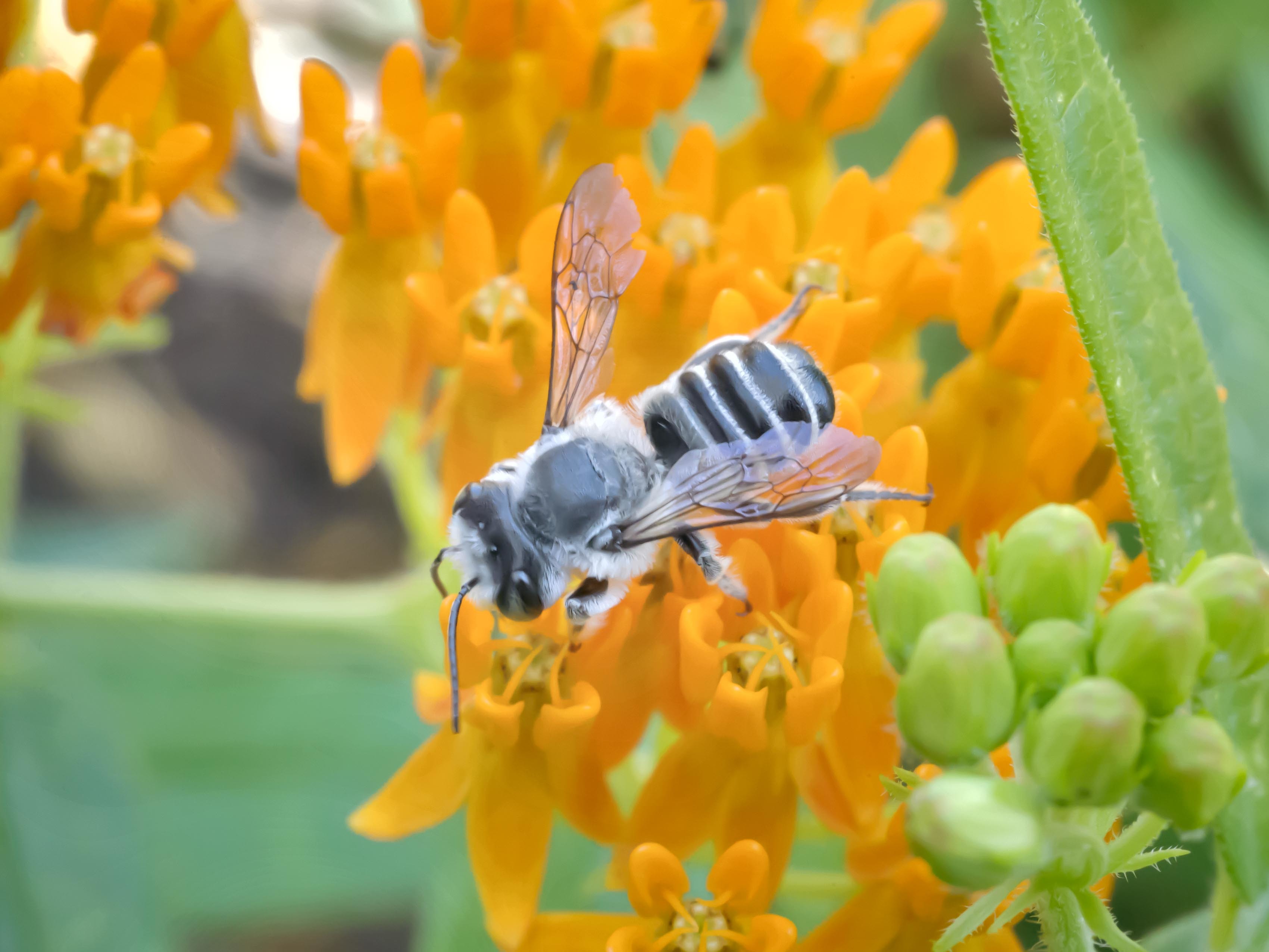
Leafcutter bee (Megachile genus) use pieces of leaf material they cut to line their nests. They collect pollen on their bellies rather than on their legs. They are stocky in build, but rapid flyers.
yellow-faced bee, photo by David Clarke
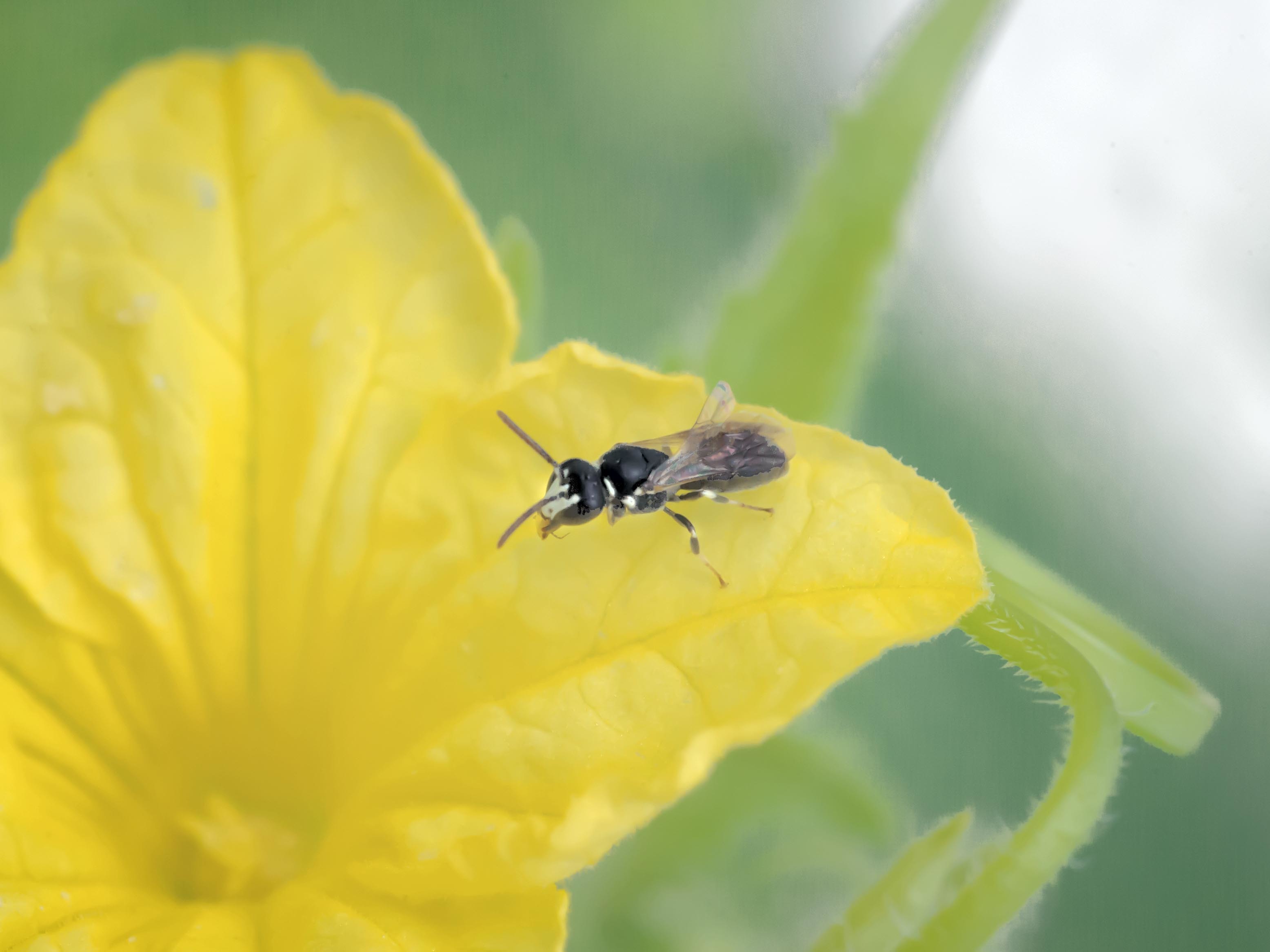
Yellow-faced bee , but some have white markings instead, as seen here. They are above-ground nesters that collect pollen in their crop, rather than on their legs, and regurgitate the food into the larval cells.
bumble bee, photo by David Clarke
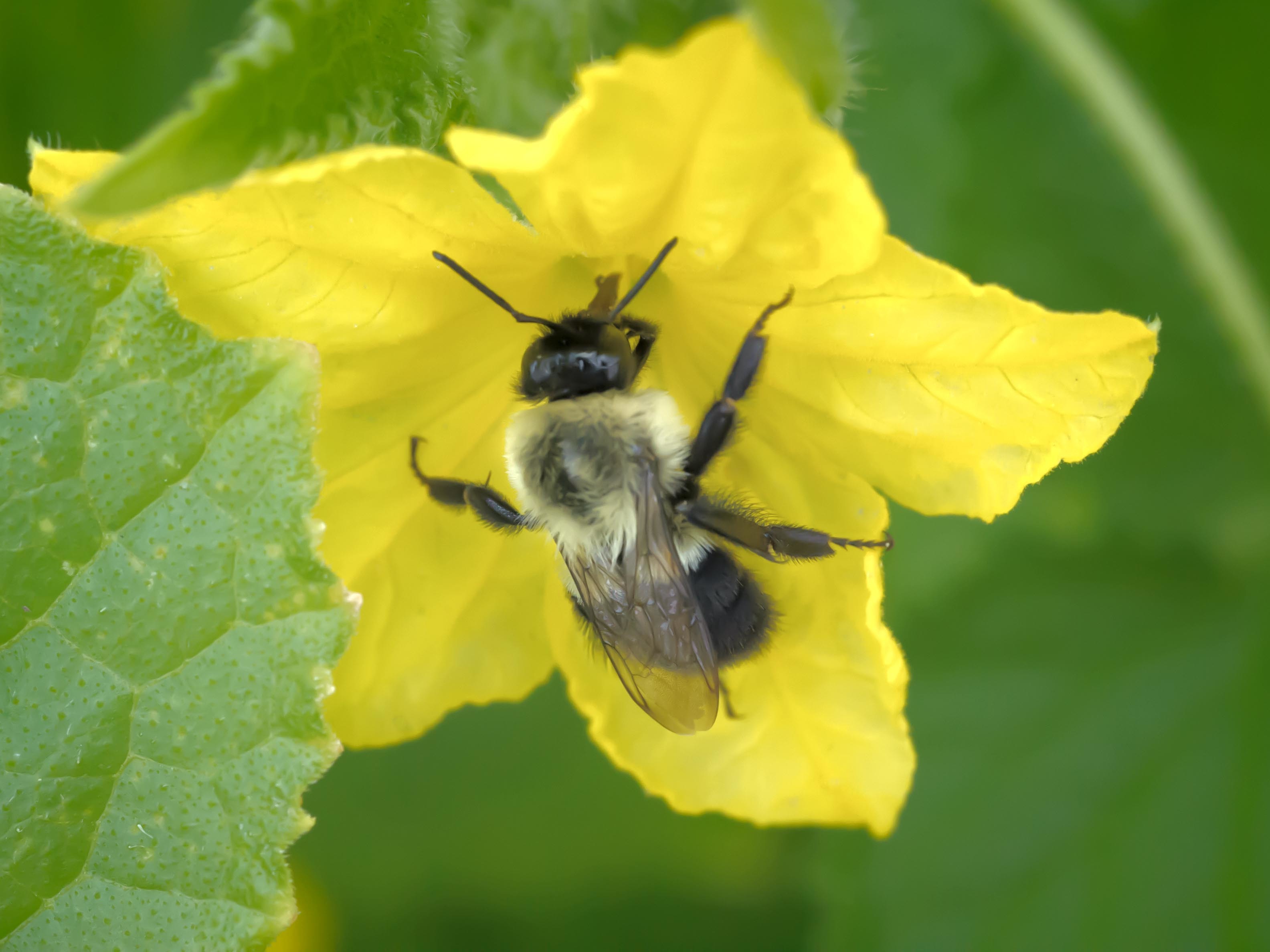
Bumble bee on a squash blossom. Most of us are familiar with bumble bees (genus Bombus, of the family Apidae) because they are so large and so prevalent. Like honey bees, they are fully social, meaning they consist of colonies of female worker bees that arise from one queen. The queen, which is the only member of the colony to overwinter, emerges in the spring to find a nesting site, usually in cavities close to the ground or between rocks. Colonies average around 200 members, but can range up to 1000.
small carpenter bee, photo by David Clarke
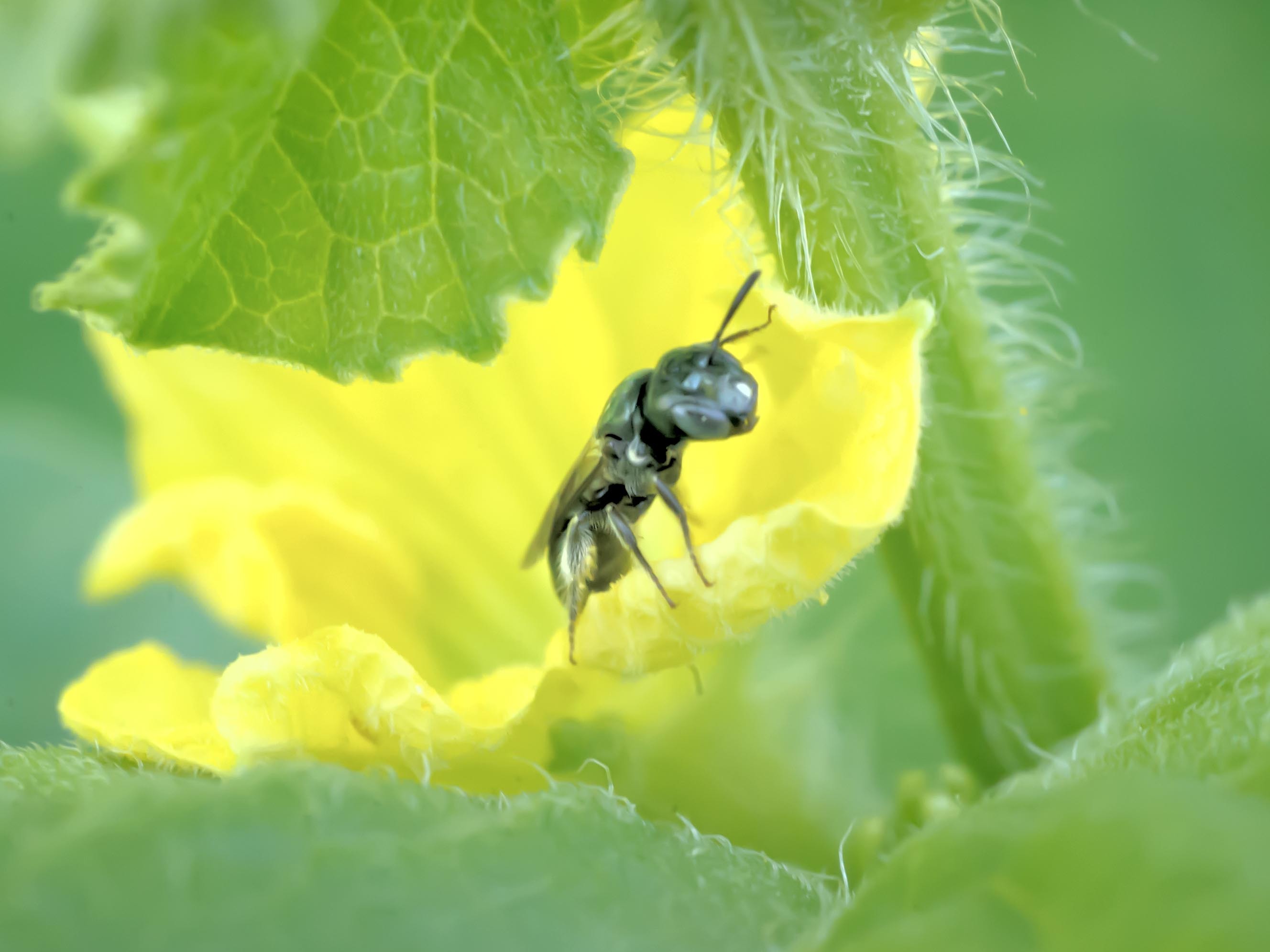
Small carpenter bee genus Ceratina on a squash blossom. They do not chew wood like the large carpenter bee, but they do nest in pre-existing cavities in wood and in hollow plant stems.
Our hope is that this initial look at pollinators visiting this urban garden serves as an inspiration to show that it is possible to attract and create an environment for a diversity of pollinating insects in an urban setting by establishing a garden of flowering plants, vegetables and herbs. These pollinators, in turn, will provide essential pollination services for the garden plants so that they can set fruit and seed for human and wildlife consumption.